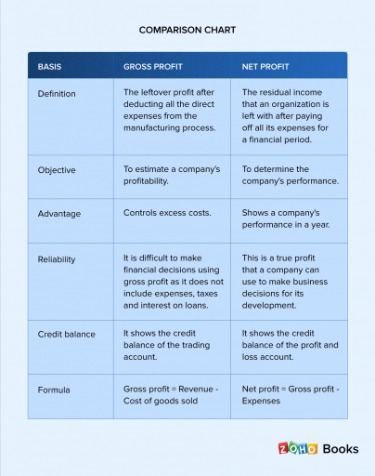This is especially crucial for the final steps of the accounting cycle, when financial statements are created and the books are reset. At the end of the accounting period, a trial balance is calculated as the fourth step in the accounting cycle. A trial https://kelleysbookkeeping.com/relationship-between-sales-purchase-discount/ balance tells the company its unadjusted balances in each account. The unadjusted trial balance is then carried forward to the fifth step for testing and analysis. The accounting cycle is used comprehensively through one full reporting period.
What are the 10 steps in accounting cycle?
The ten steps are analyzing transactions, journalizing transactions, post transactions, preparing an unadjusted trial balance, preparing adjusting entries, preparing the adjusted trial balance, preparing financial statements, preparing closing entries, posting a closing trial balance, and recording reversing entries.
Double-entry accounting suggests recording every transaction as a credit or debit in separate journals to maintain a proper balance sheet, cash flow statement and income statement. On the other hand, single-entry accounting is more like managing a checkbook. It doesn’t require multiple entries but instead gives a balance report. Even after choosing the right accounting software to automate the accounting cycle’s steps, it’s still essential for business owners and bookkeepers to know and understand the process. This is the final stage of the accounting cycle, locking in the accounting period. Closing the books resets temporary accounts on the income statement, such as revenue and expenses, to zero balances, meaning that they don’t carry into the next accounting period.
The accounting cycle’s 8 steps
Many companies like to analyze their financial performance every month, while others focus on quarterly or annual reports. To fully understand the accounting cycle, it’s important to have a solid understanding of the basic accounting principles. You need to know about revenue recognition (when a company can record sales revenue), the matching principle (matching expenses to revenues), and the accrual principle. The general ledger serves as the eyes and ears of bookkeepers and accountants and shows all financial transactions within a business. Essentially, it is a huge compilation of all transactions recorded on a specific document or in accounting software. Some steps in the accounting cycle are more tedious than others, but each one is set up to enable bookkeepers or accountants to diligently check their work before proceeding.

After financial statements are published and released to the public, the company can close its books for the period. After all the transactions have been posted to the general ledger in the appropriate accounts, Cynthia will prepare an unadjusted trial balance. Cynthia needs to ensure that the debits and credits in the general ledger are balanced. For every debit entry, there should be a credit entry that keeps the books in balance.
How the Accounting Cycle Works
In any case, the majority of bookkeepers are aware of the business’s daily financial situation. In general, figuring out the length of each accounting cycle is crucial since it establishes precise dates for opening and shutting. Thus, maintaining organization throughout the process can be a crucial component contributing to overall efficiency.

Finally, a company ends the accounting cycle in the eighth step by closing its books at the end of the day on the specified closing date. The closing statements provide a report for analysis of performance over the period. Reversing entries are journal entries made to the G/L at the beginning of a new accounting period that cancels out adjusting journal entries made at the end of the previous accounting period.
Step 7: Prepare financial statements
The accounting cycle is a holistic process that records a business’s transactions from start to finish, helping businesses stay organized and efficient. The cycle incorporates all the company’s accounts, including T-accounts, credits, debits, journal entries, financial statements and book closing. When preparing financial statements, businesses perform a series of meticulous steps designed to convert basic financial data into cohesive, complete and accurate reports.
MicroBT COO Jordan Chen Discusses The Company’s Long-Term … – Bitcoin Magazine
MicroBT COO Jordan Chen Discusses The Company’s Long-Term ….
Posted: Wed, 24 May 2023 21:03:28 GMT [source]
The purpose of these journals is to provide the details of the balance that you will later transfer to the G/L. In other words, if you end up recording $150 in payments from your customers, your cash receipts journal will provide the details for each of those payments, while the G/L will only reflect the $150 total. As a small business owner, you’ve likely had a crash course in accounting 101, learning everything from how Accounting Cycle Steps Explained to track business expenses, to learning about the different types of accounting. Once the transactions are identified and their relevant accompanying data is collected, all transactions are then entered into the general journal in a process known as journalizing. The general journal is where all transactions are listed in the order they occurred. To journalize is to record a transaction in the company’s general journal.
In case you’re wondering whether to use cash or accrual accounting, cash accounting is suitable for freelancers, small businesses and sole proprietorships. But all businesses with inventories or revenues exceeding $1 million must follow the accrual method. A business can conduct the accounting cycle monthly, quarterly or annually, based on how often the company needs financial reports. One of the accounting cycle’s main objectives is to ensure all the finances during the accounting period are accurately recorded and reflected in the statements. While the steps of the accounting cycle are typically the same for most companies, a business must be consistent in its approach should it decide to do anything differently.
- Picture Perfect’s bookkeeper is satisfied that the company’s financial statements are accurate and properly reflect its financial health.
- Mary Girsch-Bock is the expert on accounting software and payroll software for The Ascent.
- Again, there will need to be modifications made if there are inconsistencies.
- While the steps of the accounting cycle are typically the same for most companies, a business must be consistent in its approach should it decide to do anything differently.
- The eight-step accounting cycle starts with recording every company transaction individually and ends with a comprehensive report of the company’s activities for the designated cycle timeframe.
- Depending on each company’s system, more or less technical automation may be utilized.